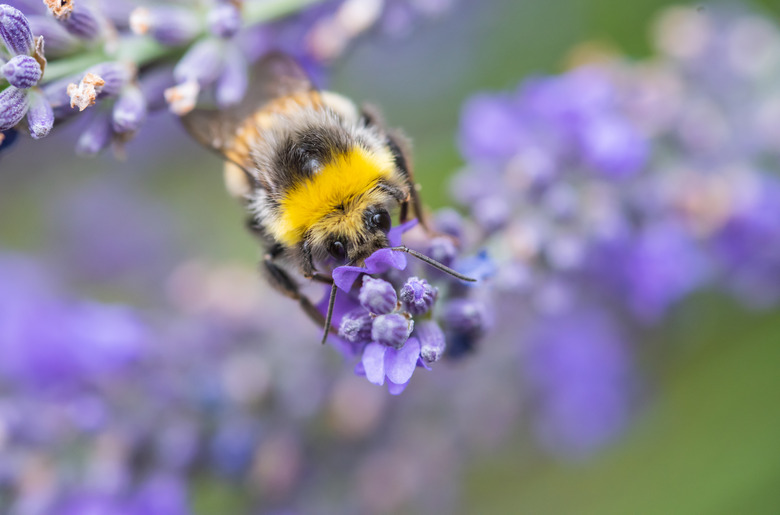How To Exterminate Ground Bees
"Ground bees" is a term given to a number of species of stinging insects that make their home in the ground. Your ground bee problem could be as non-threatening as a nest of cicada killers or as dangerous as a nest of yellow jackets, miner bees or bumblebees.
Cicada killers are large bees with an imposing appearance, but they are not aggressive and rarely attack. Yellow jackets and ground wasps, though smaller than cicada killers, will attack ferociously at the slightest provocation.
To adequately exterminate any type of ground bee, including miner bees and sand bees, you have to know which species you are dealing with (there are over 1300 species of miner bees and ground bees out there!).
Step 1
Observe the ground bees for a period of a few days and nights. There are a few reasons for doing this.
First, determine whether you are dealing with the gentle cicada killers or the aggressive Yellow jackets. This will help you determine the level of caution to use in extermination and even whether to exterminate them at all.
Second, watch for their flight pattern in the early morning and at night. This will help you determine how many entrances to the underground nest there are and an idea of how many bugs you are dealing with.
Step 2
Locate the entrances to the nest and make note of them. Sand bees, for example, often burrow in sand and/or soil mounds. Do not attempt to exterminate the pests without help if you are dealing with a sizable nest with multiple entrances.
If you fail to locate a second or third entrance, your activity in killing the bees emerging from the first hole will bring a swarm of back door defenders to the nest's rescue.
Step 3
Wait until well after dark before implementing any of these solutions. If you attempt these in the heat of the day, not only will the nest be virtually empty, you have a greater risk of getting stung repeatedly.
Step 4
Place a bug zapper directly in the path of the entrance to the nest and plug the zapper cord to the extension cord. Plug the extension cord in and watch safely from a distance as the sand bees nest protectors often fly out to try to sting the zapper.
Yellow jackets don't retreat in the face of overwhelming defeat; they just keep attacking.
After a few nights of the electrical light parade, the nest should be sufficiently depopulated to the point of the remainder of the nest leaving. If there is more than one entrance, try alternating the location of the zapper or by getting more zappers to place one at each entrance.
Step 5
Place a door or window screen over the entrance. Pour a mix of a gallon of scalding hot water, ½ cup dish soap and ½ cup insecticide directly into the hole.
Now, it's time to run. Some directions tell you to "zig-zag" in running from the bees that fly only in "straight lines."
This is an urban legend. The shortest distance between two points is a straight line; if you are zig-zagging, you are covering more ground to get away from the bees. Just run.
Step 6
Dump a wheelbarrow filled with ice over the entrance, followed by a plastic tarp and some rocks to hold the tarp down. Cover with beach sand.
The chill of the ice will slow down the insects while you are adding layers of protection over the entrance. In the heat of the day, after the ice has melted, the nest will cook underneath the tarp, killing the inhabitants.
Things Needed
- Bug Zapper
- Extension Cord
- Door/Window Screen
- Hot Water
- Soap
- Insecticide
- Wheelbarrow
- Ice
- Plastic Tarp
- Sand
Warning
If you even think you might be allergic to the venom in stings, do not attempt this.
References
Cite This Article
MLA
Roberts, David. "How To Exterminate Ground Bees" sciencing.com, https://www.sciencing.com/exterminate-ground-bees-8681820/. 22 November 2019.
APA
Roberts, David. (2019, November 22). How To Exterminate Ground Bees. sciencing.com. Retrieved from https://www.sciencing.com/exterminate-ground-bees-8681820/
Chicago
Roberts, David. How To Exterminate Ground Bees last modified March 24, 2022. https://www.sciencing.com/exterminate-ground-bees-8681820/
